How to Compress the Golf Ball (and add 15+ yards to your shots)
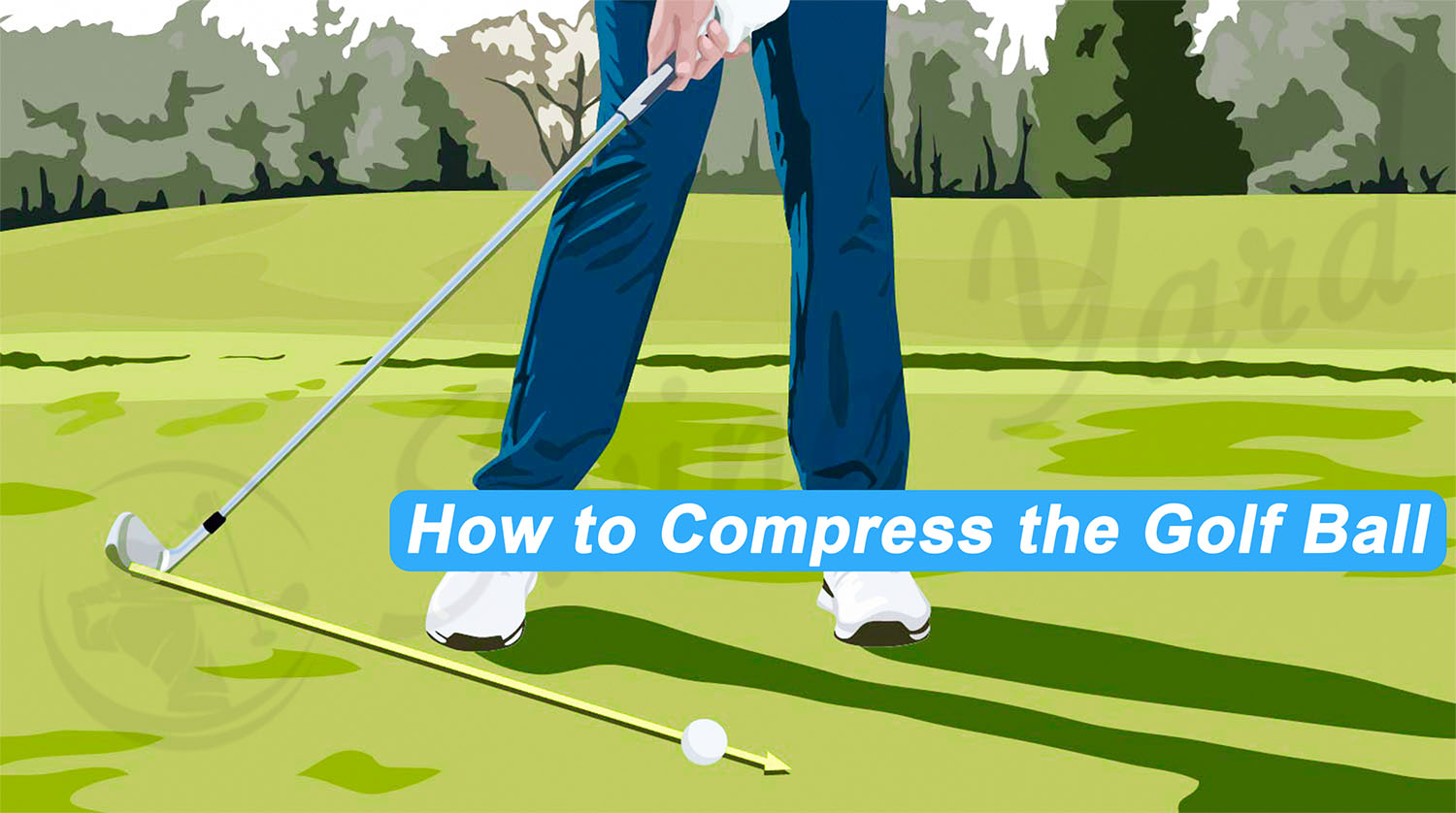
By Coach Erik Schjolberg – Jan 14, 2024
Contents
Key Takeaways
- Compressing the ball gives you greater distance and control
- Deloft your club for maximum pressure at impact
- Low, controlled launch will deliver consistent ball flight
- Proper weight shift to lead leg on downswing
- Apply forward shaft lean
- Use wrists to square clubface at impact
- Rotate hips through impact
- Use drills to learn to compress the ball
Today, I explain how to compress a golf ball for greater distance and control with your irons.
First, I will take you through the advantage of maximum compression, including accelerated ball speed, distance, and low launch. Then I explain how to improve and produce more compression before launching into some drills that have worked for me.
What Does It Mean To Compress The Golf Ball?
In golf, compression refers to the process of delofting your golf club to create maximum pressure on the ball at impact. This procedure leads to a metric known as “spin loft,” which determines the difference between your attack angle leading into contact versus the clubface loft.


You’ll find that the added pressure on your ball at contact, coupled with a delofted club, produces a low, long golf shot.
What Are The Advantages Of Compressing the Golf Ball?
Accelerated Ball Speed
Optimal compression helps your ball spring off the clubface, generating rapid velocity for a powerful launch and increased distance. In addition, you will find that strengthening the loft of your golf club lowers the spin rate, and when combined with rapid speed, you produce superb yardage.
Low Launch
Failing to generate sufficient compression can elevate your spin rate and weaken the loft of the clubface to produce a towering apex. Although this is welcomed for slow swing speed golfers, desperate to get their ball airborne, it costs you precious distance.
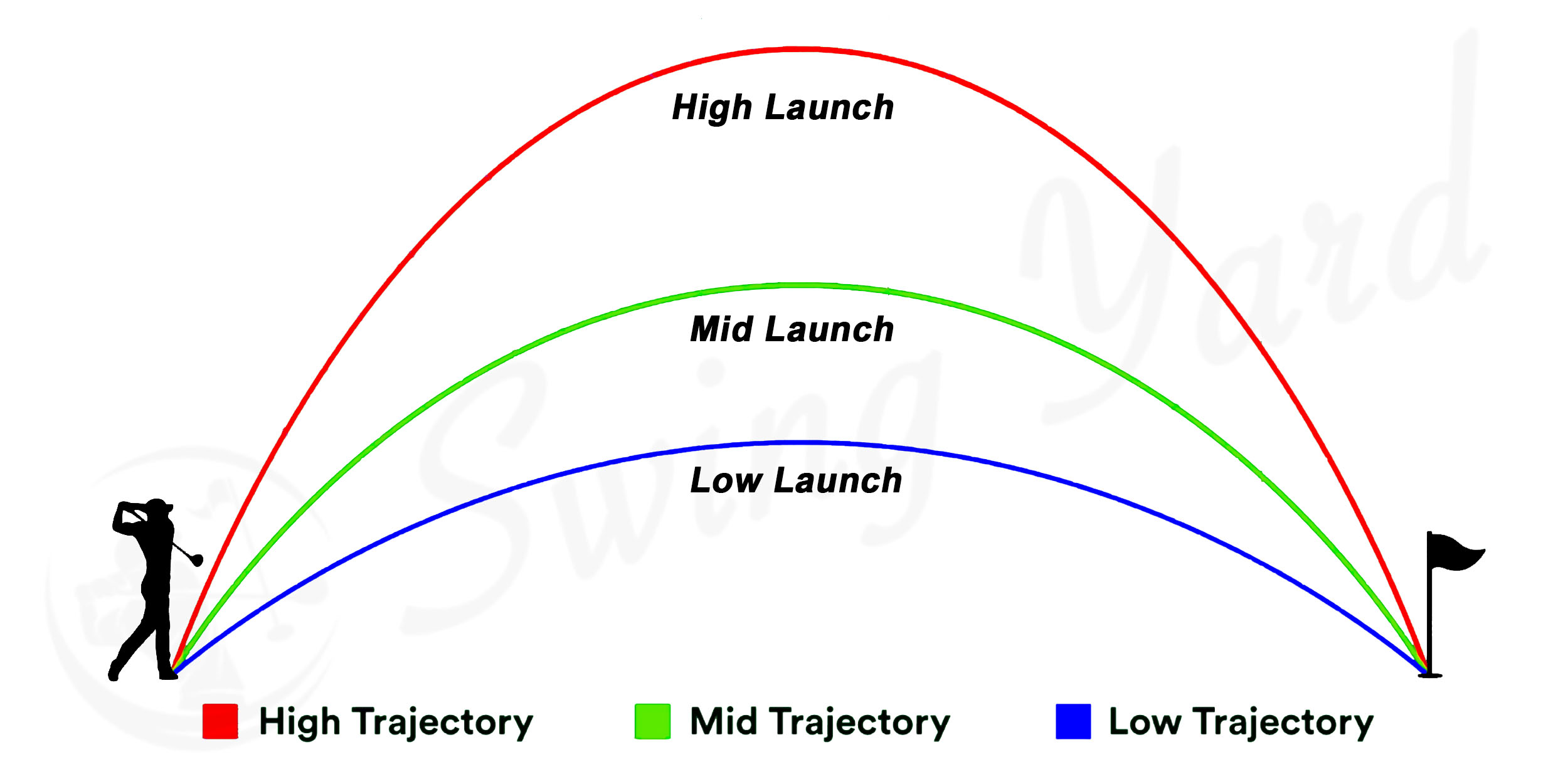

By delofting your clubface into the impact position, you’ll find that it sets you up for a low, controlled launch to deliver consistent ball flight and ample roll upon landing.
Optimal Distance
The collaboration between accelerated ball speed, low launch, and uninterrupted flight gives you optimal distance on the golf course.
It’s a game changer for those shots where it is too short for a full swing with one club but marginally long for a full golf swing with another.
For example, you hit a pitching wedge 108 yards and a 9-iron 120, but you are left with 110. Now you can deloft your pitching wedge and make up the extra yards without swinging harder and forcing it. At the end of the day, it ensures you do not leave any distance on the table.
If you want to know what materials inside the golf ball are best for certain compression results, read what are golf balls made out of.
What Happens If You Don’t Compress The Golf Ball?
Reduced Ball Velocity
Less compression at the point of contact leads to a loss in energy transfer. You’ll find that this sheds miles per hour and hampers the distance potential of the ball.
Weak Launch
When you fail to compress the ball, you struggle to optimize the energy transfer from the clubface to dimples at impact. You’ll also find that you carry a weaker loft, which positions you for a higher launching shot. This hampers the forward momentum and causes the ball to fall short of its overall potential.
Slice Or Push
The lower loft of your golf club and closed clubface angle helps you produce more straight flying golf balls. The only risk is that the closed clubface can aggravate hooks if your rhythm and tempo are off.
You’ll find that this clubface position is ideal for aiding the average golfer in combating spin that leads to a pushed or sliced golf shot.
When your clubface is upright, leading into impact, it is slightly open to the target, posing a higher threat to a wayward strike than a closed clubface.
Loss Of Total Distance
A lack of compression on golf shots can set you up to launch your golf ball higher than intended, relinquishing control over the shot. The escalated apex sees the ball follow an aggressive descent before landing and producing minimal roll, costing you total distance. Check out our list of the best golf ball for distance and control if you want extra help in this area.
How to Compress the Golf Ball with IRONS
How to compress the golf ball with your irons can be broken down into 4 steps:
1. Place Weight On Your Lead Leg at Setup
Golf coach Clay Ballard explains that your journey to compressing the golf ball starts with placing more weight on your lead side. That is your left leg for right-handers and the right for lefties. Ballard suggests placing 60 to 70% of your weight on this side to push your hands ahead of the ball.
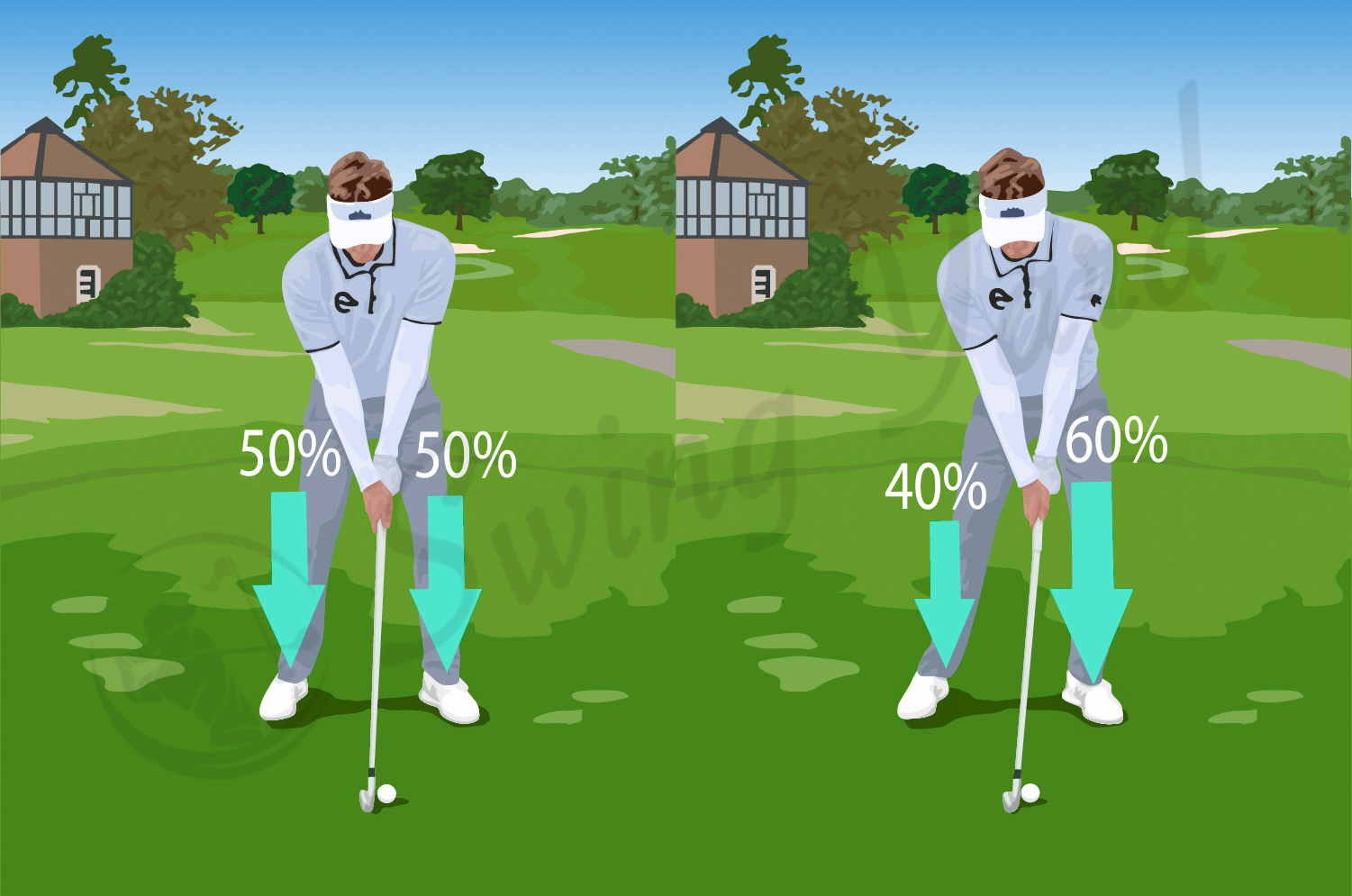

Also, the aim is to prevent you from leaning back into contact, increasing clubface loft and ballooning your strikes, or worse, topping your shot.
2. Forward Shaft Lean
I touched on the importance of placing your hands ahead of the ball earlier, but let me dive into greater detail to give you a clearer understanding.
Shaft lean occurs when your hands are ahead of the ball, and your club is angled towards your lead leg. You will see that this setup delofts your golf club and closes the clubface slightly to prepare for a lower, straight shot.
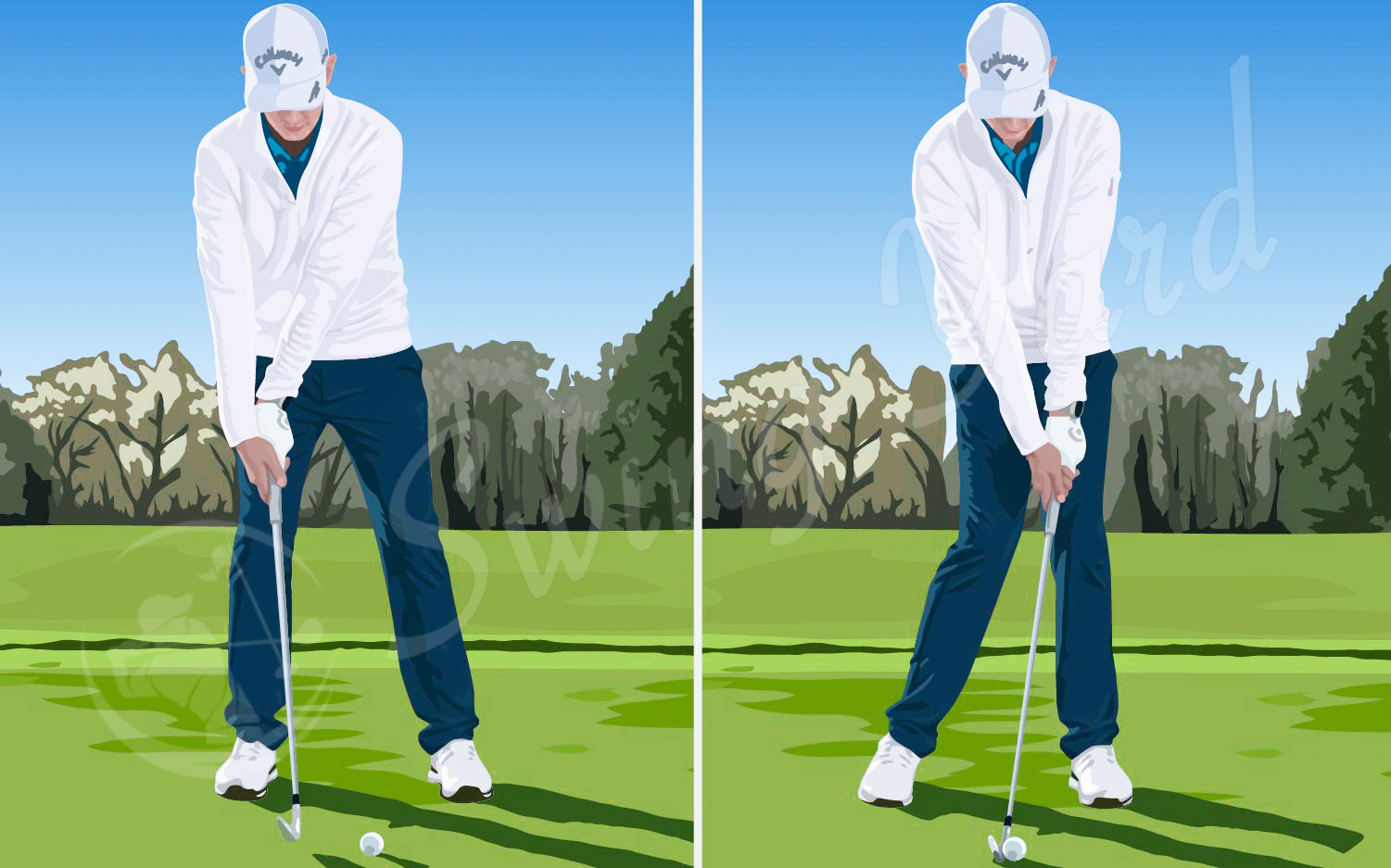

Setting up in this position allows you to feel and envision the optimal point of contact for superior ball striking. Forward shaft lean can feel awkward initially, but setting up in this pose at address helps you understand where you need to be at contact.
An easy tip to remember in this position is that your right palm should face the turf inches ahead of your ball. When you are in that position, you have achieved your object and are ready to swing.
3. Square The Face Using Your Wrists
If your clubface is open or closed at impact, you will lose power, ball speed, and accuracy. That is why you must square the clubface at impact to start your ball on a straight line, with maximum velocity.
Following the setup instructions, you know your shaft should be leaning forward at contact. You’ll find that it helps you deloft the clubface and enhance compression for a controlled, low launch.
However, you need to slightly roll your wrists leading into impact to square the clubface, or it will remain open through impact and prompt a slice or a push.
I like to compare it to a forehand in tennis. When you take your racquet back inside, the face is open to your target, requiring you to roll your wrists to square it up at impact.
The same principle applies to compressing the ball and delofting the clubface at impact. As the clubhead hurtles towards the low point of your swing, roll the wrists slightly to get the clubface in the intended impact position.
4. Rotate Hips Through Impact
In his instruction video, Ballard explains that your hips should open 45 degrees to the target through impact for a stronger loft and a powerful strike.
Unfortunately, the average amateur only conjures up 30 degrees of hip turn, which shows that most are not producing optimal compression. In addition, you will need to open your shoulders and rib cage to the target. Check out the image below (it’s with a driver, but it really shows how much you should be opening the hips during the swing).
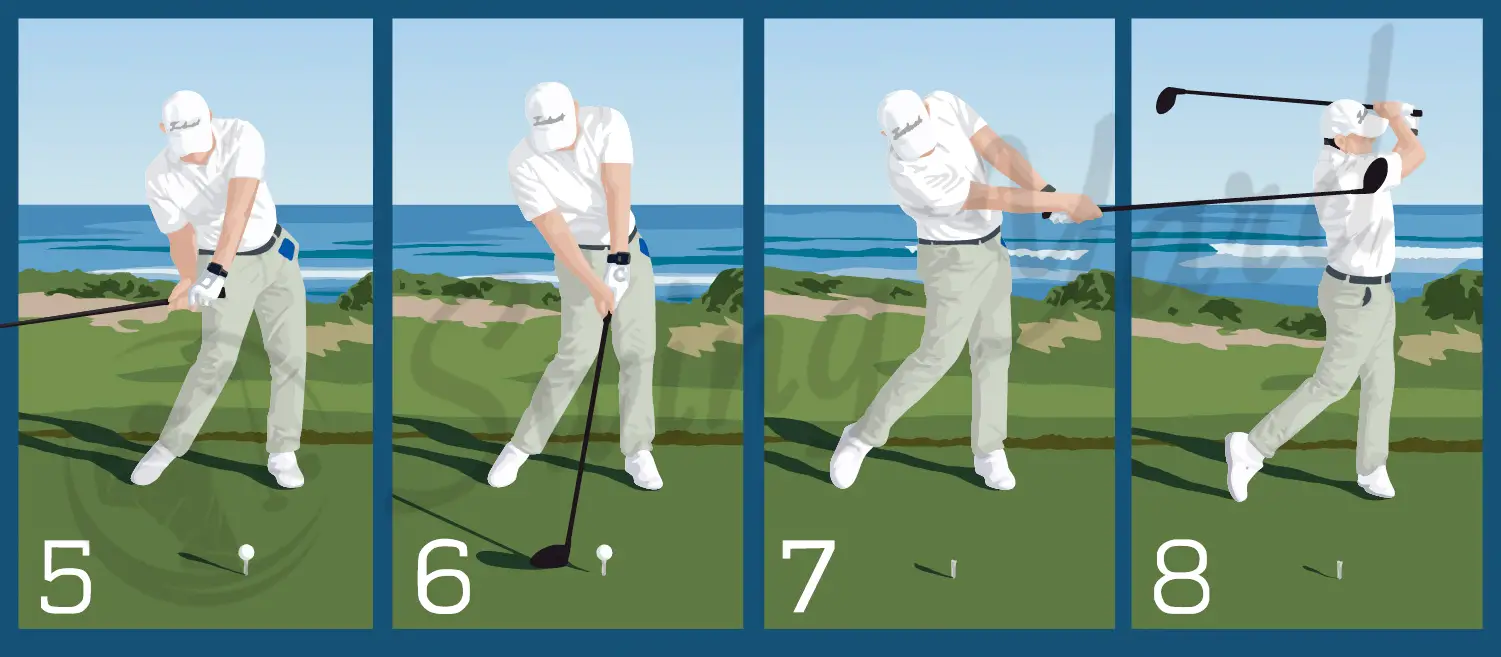

Many amateurs fail to optimize rotation through impact and strike the ball with their hips and shoulder square to the impact zone. You’ll find that this causes you to stand upright at contact and increase your clubface loft, which may prompt a skied strike if you are lucky to strike the ball cleanly.
Clearing your hips at impact helps you produce a well-struck shot and ensures a lower spin loft for a controlled launch and so much distance. In addition, you’ll notice that opening your hips, shoulders, and rib cage to the target improves your ability to get the clubface square at contact for greater accuracy.
How to Compress a Golf Ball with DRIVER
1. Ball Towards the Front of Your Stance
Your first objective is to place the ball forward in your stance to account for the increased shaft length. You will need more time to get the clubface square to the target at impact compared to an iron. The optimal position is parallel to your lead heel, but you can adjust it to your preference.
2. Shallow the Club
This is where amateur golfers struggle the most with driver compression, as shallowing the club requires a change of path at the top of the backswing. Golfers use this adjustment to generate lag for maximum downforce, clubhead speed, and ball velocity.
Sergio Garcia offers one of the best examples of shallowing at the top of the backswing. You will notice it helps him generate exceptional power, prompting a clean strike and optimal long-game yards.
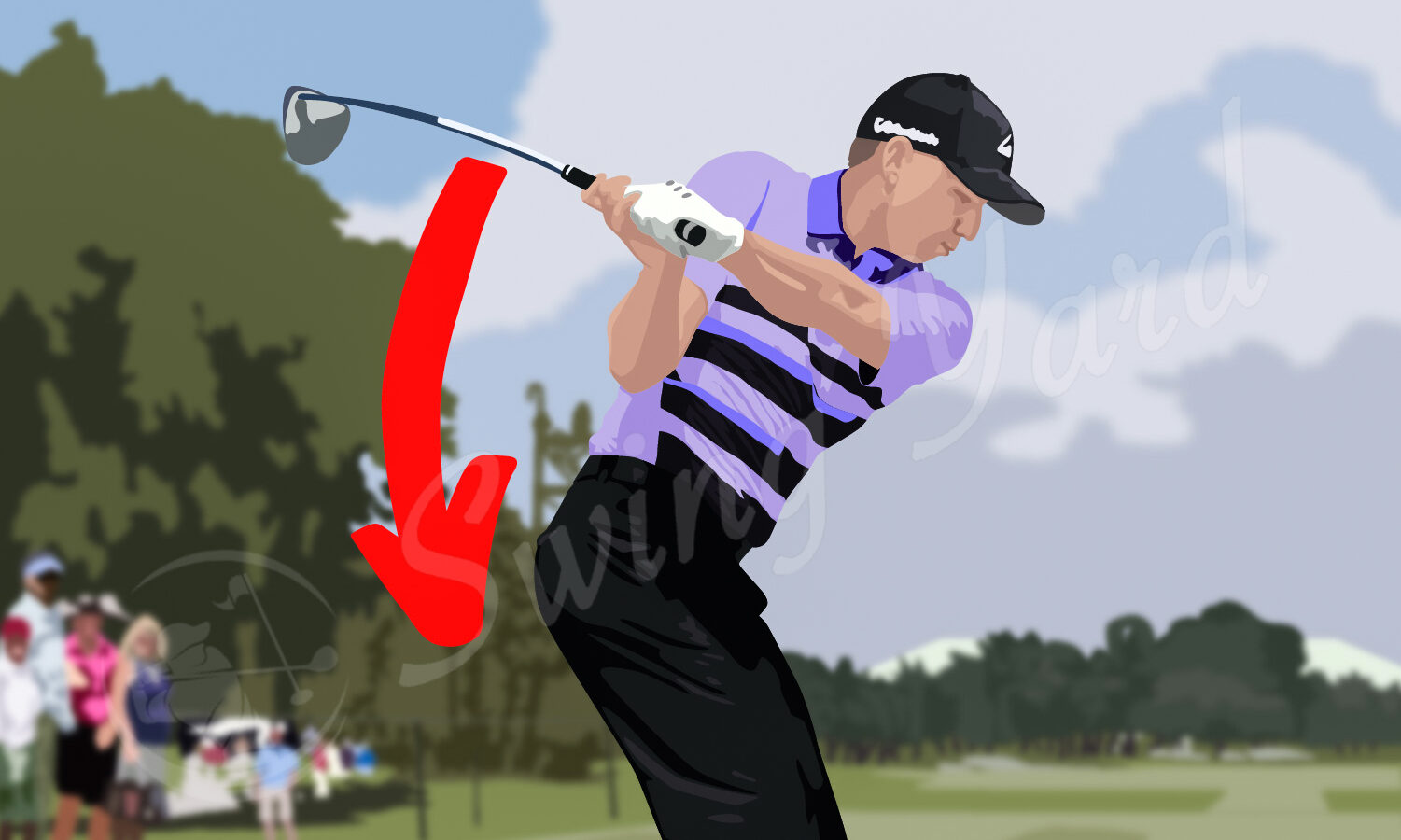

When you get to the top of your swing, imagine you are pulling a chain to open a roll-up garage door. Drop the club down as if it were the chain until the shaft is parallel to the turf, and then guide the clubface to the ball.
3. Optimize Hip and Shoulder Turn
As I explained with irons, hip and shoulder turn is vital for producing a clean strike, keeping your club delofted, and achieving accurate results. The same procedure applies to a driver because the rotation is vital to get your shaft on plane, to create lag, distance, and accuracy.
When your hips and shoulders work in tandem, it makes it easier for you to produce maximum power and keep your club on path.
Drills to Compress the Golf Ball
Here are 3 helpful drills to compress the golf ball more often:
1. Tee Behind The Ball
I find the tee behind the ball drill a simple exercise to boost compression, as it teaches you to strike the golf ball at the low point of your swing. The process is simple, place a tee an inch behind your golf ball and zero in on the peg.
Take a swing and attempt to brush the top of the tee leading into impact. If you achieve this, your clubface is on path, and your hands are ahead of the ball to produce maximum compression.
2. Top Down
I have done this drill since I was a junior because it improves various aspects of my game. You take your favorite club and commence your swing. When you reach the top of your backswing, pause and hold this pose. Now, focus on the impact zone, and when you are ready, begin your downswing.
Because you had no momentum from the top, you rely on optimal hip and shoulder turn, and compression to produce the desired launch. If you only use your arms, you will cast the club and send it off path for a wayward strike. Plus, you’ll find that you lose power and distance.
3. Plane Slider
I have seen golf coach Todd Kolb employ this drill in his videos, and it may improve your understanding of the mechanics at each point of the swing. A plane slider has a ball attached to it which moves up and down during your golf swing.
At address, the ball sits at the bottom of the shaft close to the clubhead, and your aim is for the ball to relocate to the top of the shaft when you reach the peak of your backswing. That shows that you have taken the club away on the optimal path to promote an easier downswing and enhanced compression.
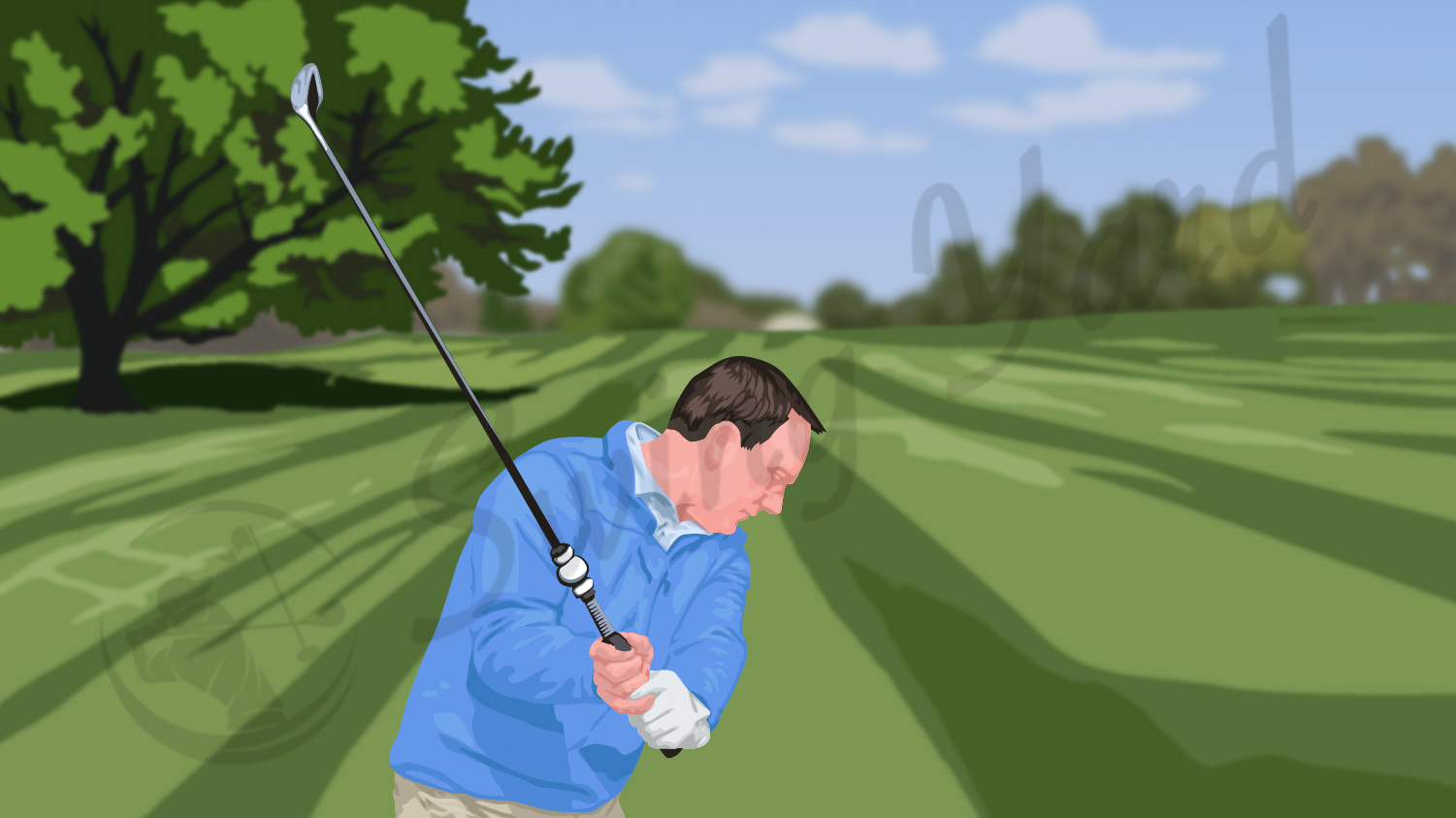

If you do not hear the ball slide to the top of the shaft it means your club is too flat on takeaway, and it is challenging to get it back on path for a compressed strike. This drill effectively trains you to take the club away on the correct path for a hassle free downswing and maximum compression.
You can pick up a plane slider at an affordable price, and you can use it whenever or wherever you see fit. A cost-effective option is the OFG XactSwing training aid, which allows you to practice this drill constantly.
FAQ
How do you consistently compress a golf ball?
Consistently compressing the ball requires you to strike it with a delofted clubface angle at the low point of your swing. In theory, the practice is simple, but it takes years of training and dedication to become a solid ball striker.
Also, you want to make sure you get the right golf ball for you, your swing, and your playing style. We have a complete buyers guide on the top rated golf balls in 2024 to help you find which one is best for you.
It also helps when you’re starting out to get a more forgiving golf ball (our test results of those are here). They will be a little bit easier to compress and also provide more control on mishits.
How do you compress a golf ball instead of sweeping?
The best way to compress a golf ball instead of sweeping, is to shallow your club on the downswing, create lag, and clear your hips and shoulders through impact while keeping your hands in front of the golf ball. Following these steps helps you strike your golf ball on the downswing instead of sweeping it on the up.
Does golf ball compression really matter?
Yes, ball compression does matter, especially for amateur golfers. A higher compression rating signifies that the ball is firm and provides limited spring assistance off the clubface, making them better suited golf balls for high swing speeds.
Conversely, a low compression ball provides maximum spring off the clubface to generate rapid velocity and consistent distance. Those golf balls are built for slower swinging high handicappers and make for the best womens golf balls, because faster swingers may produce excess spin and balloon their shots with those balls.
Does it matter what brand of golf ball I use?
Well, sort of. Each of the top brands will have golf balls on the entire spectrum of compression ratings. Some of the smaller brands do cater to a specific swing speed or skill level though. I know, it can get confusing haha. We’ve tested and ranked the best golf ball brands if you want to give that a quick read.
Is it harder to compress a golf ball in cold weather?
Yes, the balls will be a bit harder when it’s cold out, making them harder to compress. Some golfers switch to a softer golf ball in winter, but it really depends on how cold it its and what you’re looking for (distance or control). Check out our article on cold weather golf balls to see which is best for you.

